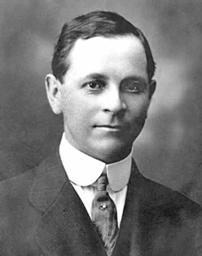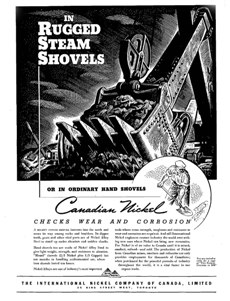This column was originally published in the Late Summer, 2010 issue of Highgrader Magazine which is committed to serve the interests of northerners by bringing the issues, concerns and culture of the north to the world through the writings and art of award-winning journalists as well as talented freelance artists, writers and photographers.
Timmins Owes its Very Existence to Six Men Not Three!
Timmins city clerk Jack Watson says with a note of bitterness in his voice:
“We submitted all six and were upset with the decision. We appealed but lost.”
The community that calls itself The City With a Heart of Gold has every right to the motto because literally the ground beneath it, the heart of Mother Earth, has arteries of gold.
There has been gold production in Timmins continuously since 1910 and it will continue for many more decades. There is no reason for a thriving modern city to be located in the middle of nowhere; there is no port to support international trade, no junction of railways, no meeting of highways that is a destination point.
Yet, Timmins is in the midst of a four-year celebration of 100 years of history and achievements.
No achievement was greater than the exploits of these six men: Sandy McIntyre, Hans Buttner, Harry Preston, John (Jack) Wilson, Benny Hollinger and Alex Gillies.
They discovered in 1909 the gold deposits that became the Big Three producers in Canadian mining history, the Dome (1910-still in production), the Hollinger (1910-1968) and the McIntyre (1912-1988).
Yet earlier this year the Canadian Mining Hall of Fame inducted just three of the six into its illustrious membership. Wilson and Harry Preston found the gold outcrop that was to become the Dome or as its workers fondly called it, The Big Dome. Only Wilson made into the Hall.

























 The Porcupine Gold Rush of 1909 was a transformative event in Canadian history, with three gold mines discovered by separate prospecting parties a few miles from each other. The rich discoveries made by Benny Hollinger (1885-1919), Sandy McIntyre (1869-1943) and John (Jack) Wilson (1872-1948) in northern Ontario wilderness led to the development of one of Canada’s premier mining camps and the founding of Timmins, the City with a Heart of Gold.
The Porcupine Gold Rush of 1909 was a transformative event in Canadian history, with three gold mines discovered by separate prospecting parties a few miles from each other. The rich discoveries made by Benny Hollinger (1885-1919), Sandy McIntyre (1869-1943) and John (Jack) Wilson (1872-1948) in northern Ontario wilderness led to the development of one of Canada’s premier mining camps and the founding of Timmins, the City with a Heart of Gold.
 Prosperity, modernity, pioneer color and a relief problem
Prosperity, modernity, pioneer color and a relief problem